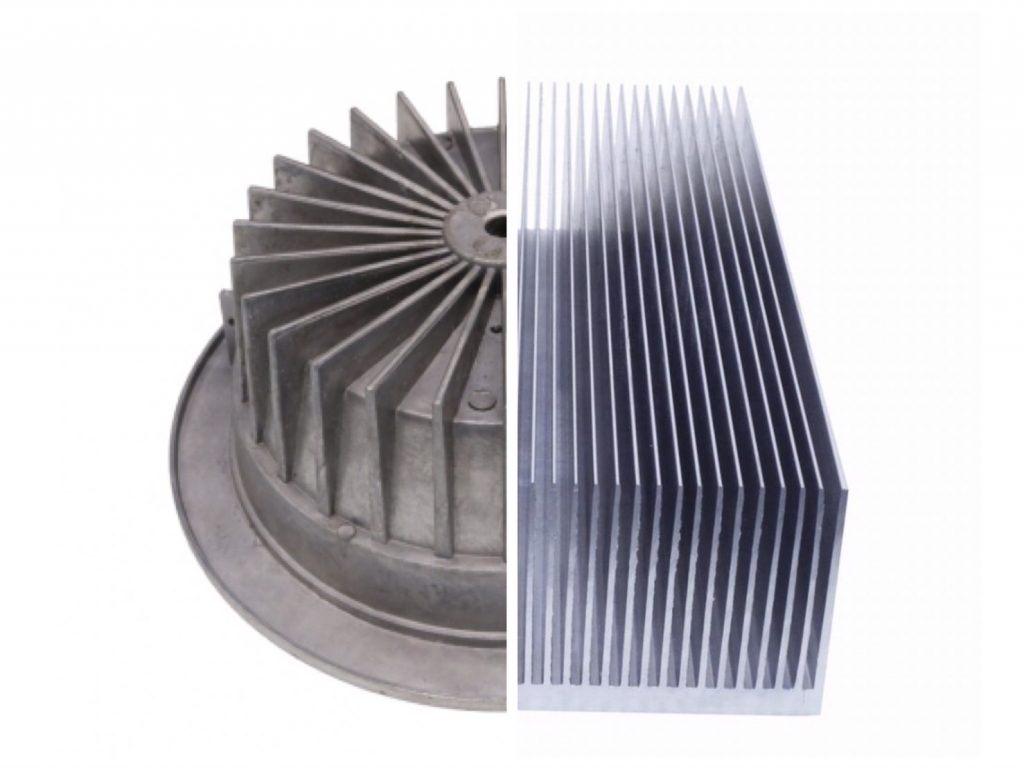
In the previous article, we have introduced the differences between aluminum extrusion and die casting. Now we start to talk about how extrusion and die-casting can be applied in the heat sink production.
Aluminum extruded heat sink
In the manufacture of heat sinks, the most common is the aluminum extrusion process. The technology of aluminum extrusion is relatively simple, and it is easy to post-process. The mainstream low-end products are basically aluminum extruded heat sinks. The widely used aluminum extruded material is AL6063 which has good thermal conductivity. (The thermal conductivity of AL6063 is about 200W / mK and the pure aluminum is 236W / mK.) The aluminum extrusion products have the same cross-section in any length and section so that it is impossible to manufacture a complicated shape. In addition, limited by the mold, the aspect ratio and density of the fin cannot be arbitrarily designed.
Aluminum die-cast heat sink
For heat sinks with complex shapes, aluminum die-casting is often used, which is commonly used in notebook chip heat sinks and industrial heat sinks. Compared with the aluminum extruded heat sink, the aluminum die-cast heat sink is formed at one time, and the processing cost is low. The aluminum die-cast heat sink is generally made of ADC12, which has a thermal conductivity of about 96 W/mK, which is almost half that of aluminum extruded heat sink. The cost of aluminum die-casting molds is also relatively high.
You can find the photo display of the parts made by us HERE!
